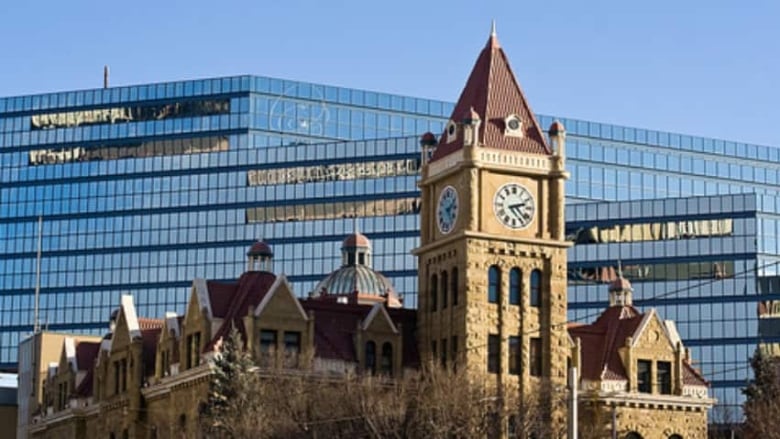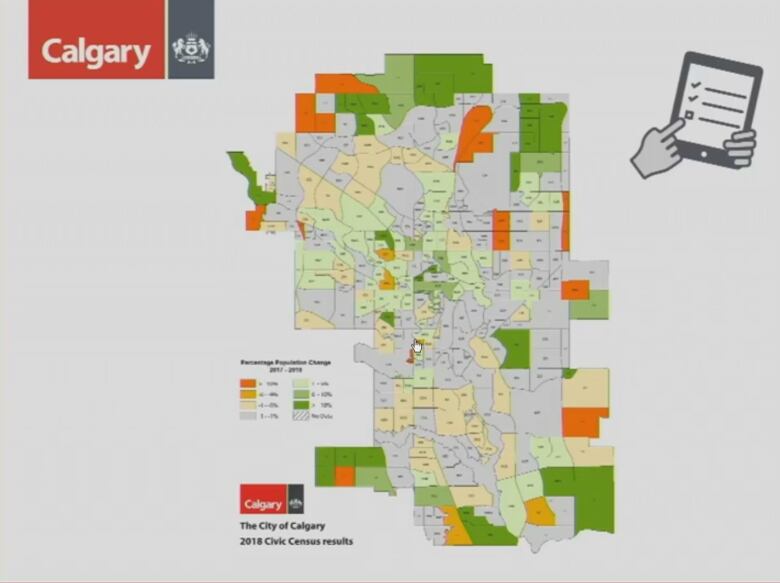Calgary grows 1.69% over past year due to births, new residents
The city has 21,007 more people living here than it did in 2017

The City of Calgary grew by more than 20,000 people in the past year,according to census results released Friday.
The increase of 1.69 per cent is being attributed to more births and higher net migration a bump Mayor Naheed Nenshicalls "a healthy level of growth."
"When we were adding nearly 40,000 people every year when we were adding Red Deer every 2 years to Calgary it actually was very, very difficult to keep up," the mayor said at the census data release.
"I think maintaining a level of around 20,000 really is an area that provides enough growth and progress in the city but also allows us to keep up with infrastructure.
"The odds of us maintaining this level? Very poor. But I think this is a healthy level to be at."
The 2018 annual civic census determined the population now sits at 1,267,344, an increase of 21,007 people from last year.
The increase builds on the smaller growth recorded in the previous census.
The 2017 results showed the city grew by 11,166 people, reversing the trend of more people moving away than arriving following the slump in oil prices. However, that last census showed the growth was mostly due to births, rather than new people choosing Calgary as their home.
This time, net migration is up considerably.
- Read the full census results on calgary.ca/census
From April 2017 to April 2018, Calgary saw a net migration of11,588 people. That's up from thesame period a year earlier.
Population growth overall is still mainly attributed to more babies being born than people dying, known as a natural population increase.
The city had a natural increase of9,419 in the most recent census tracking period. That's a drop of 773 from the year before.

Beltline hadthe highest number of people join a community in Calgary with 1,668 new residents in the past year. Nine other neighbourhoods had more than 1,000 new neighbours, including Saddle Ridge, Cornerstone and Redstone.
Most of the growth was on the outskirts of the city in newer communities.
However, Nenshi said he was interested to see a bigger variety of families moving into established suburban neighbourhoods, such as Auburn Bay and Mackenzie Towne. A goal of the city is to increase density and use existing infrastructure, such as schools.
"What we really saw was last year in the height of the economic downturn, we really went backwards on that. Really interesting that in an economic downturn, people were moving into new neighbourhoods[rather] than moving into or renovating or changing homes in existing neighbourhoods," Nenshi said. "That really surprised me, and what I see now is almost a complete reversal of that."
'Really important stuff'
To push for increased density and a bigger variety of ages, Nenshi said the city has beenaiming to allow more row housing and semi-detached homes in established neighbourhoods. He saidfamilies have been priced out in many of these areas from affording single detached homes, so they're choosing a smaller home in exchange for location. A variety of generations helps extend the life of infrastructure, he said.
"This is really important stuff because even on Monday council's going to make a multimillion dollar decision around what neighbourhoods we want to invest in," Nenshi said, referring to the planned new community growth discussion.
"It's really hard to make those sorts ofdecisions, based on the interests of the people who own the land or the various people lobbying for various sides of this, without the data source in the middle."
Calgary also saw an almost one-percentage-point drop in the vacancy rate, which now sits at 3.86 per cent overall. Nenshi attributed that to more people moving to Calgary. The city also saw about 9,000 housing units added in that time period.
The overall response rate to this census was up by 1.14 per cent, to 98.61 per cent. More than a third of those responses were filled out online.
This year, the city has also released the data in a machine-readable format to assist in citizen analysis of the data. It has also released comprehensive historical data for comparison, and will be offering an online mapping tool to help Calgarians visualize the data in their neighbourhoods.
- MORE CALGARYNEWS |At least two malls use facial recognition to track shoppers' age, gender without consent
- MORE CALGARYNEWS |Groups call on Arts Commons to cancel Jordan Peterson event
- MORE CALGARY NEWS |Transgender community upset by driver's licence 'stunt'
- Read more articles byCBC Calgary, like us onFacebookfor updates and subscribe to ourCBC Calgary newsletterfor the day's news at a glance
With files from Scott Dippel.












_(720p).jpg)


 OFFICIAL HD MUSIC VIDEO.jpg)
.jpg)



























































































